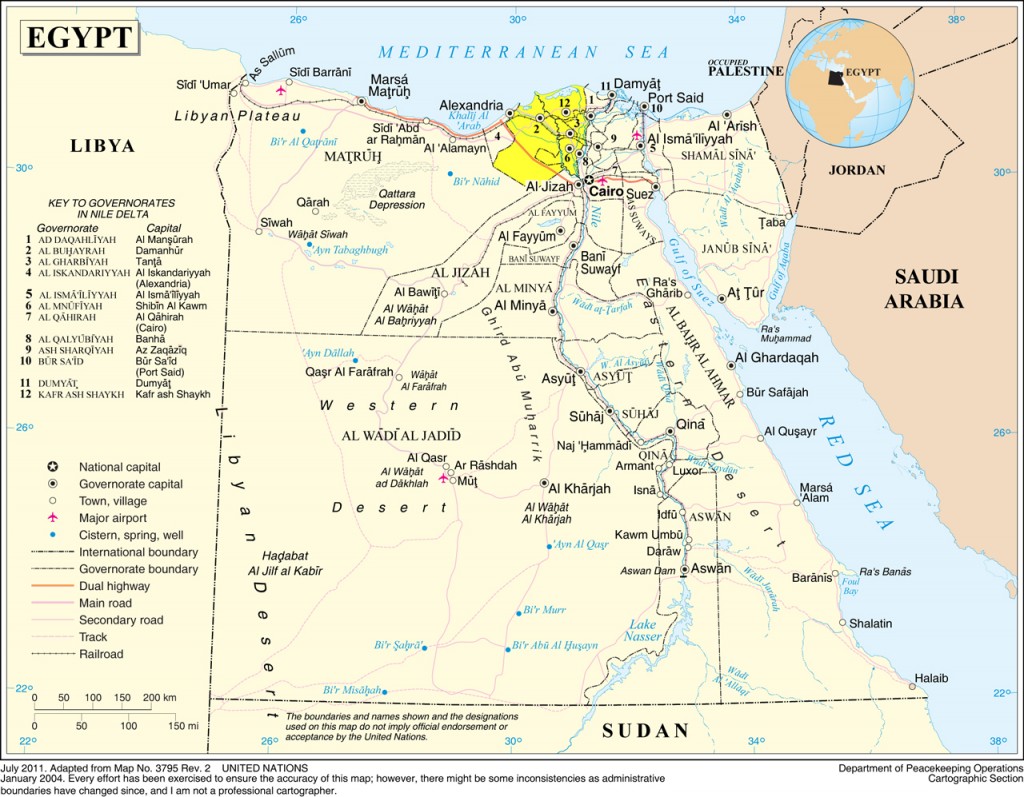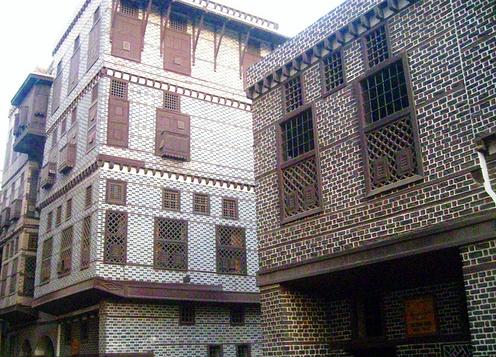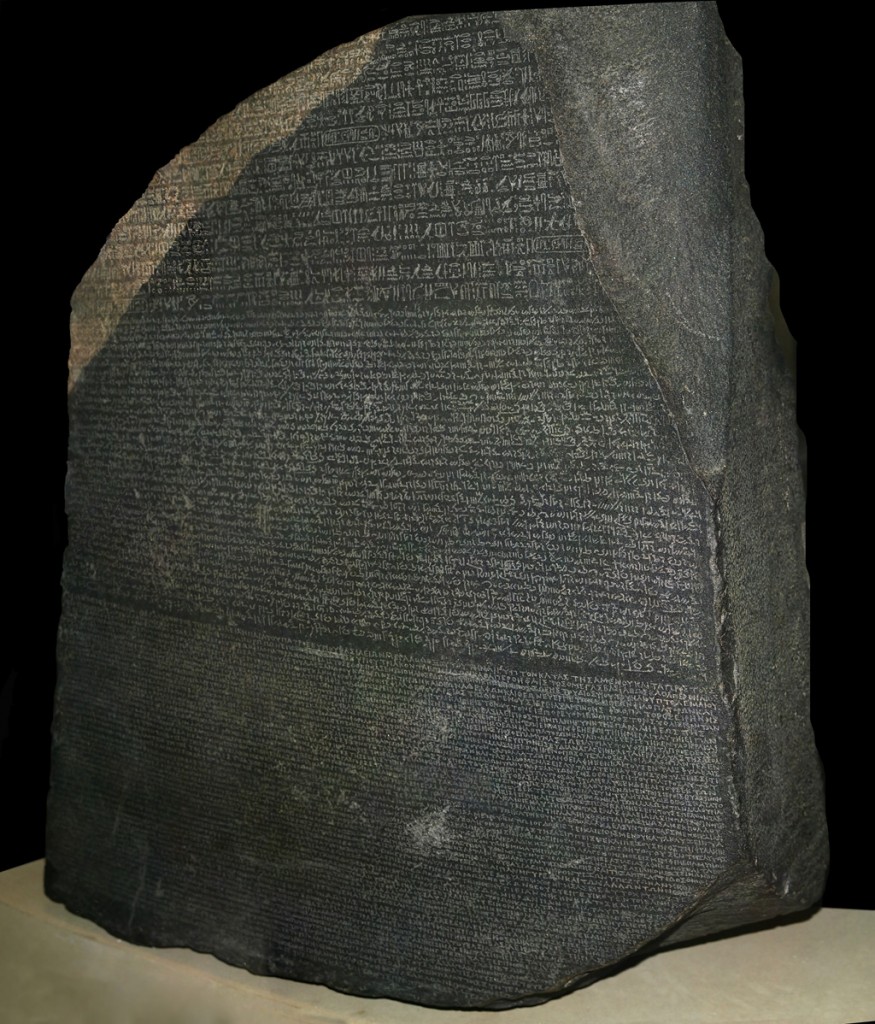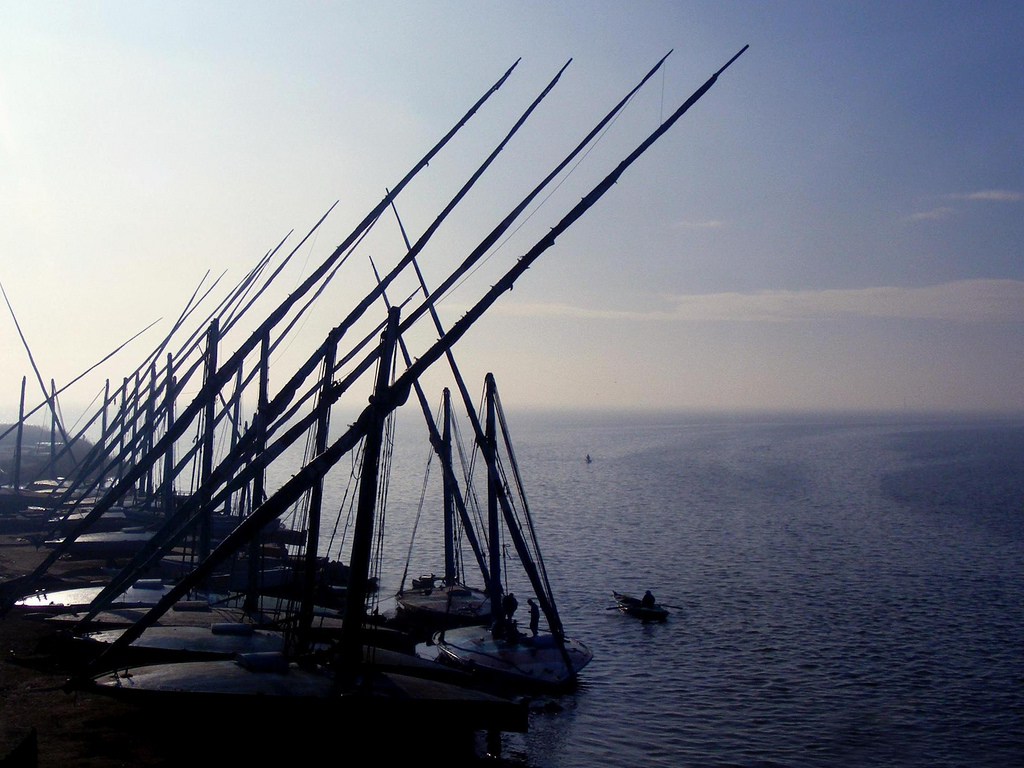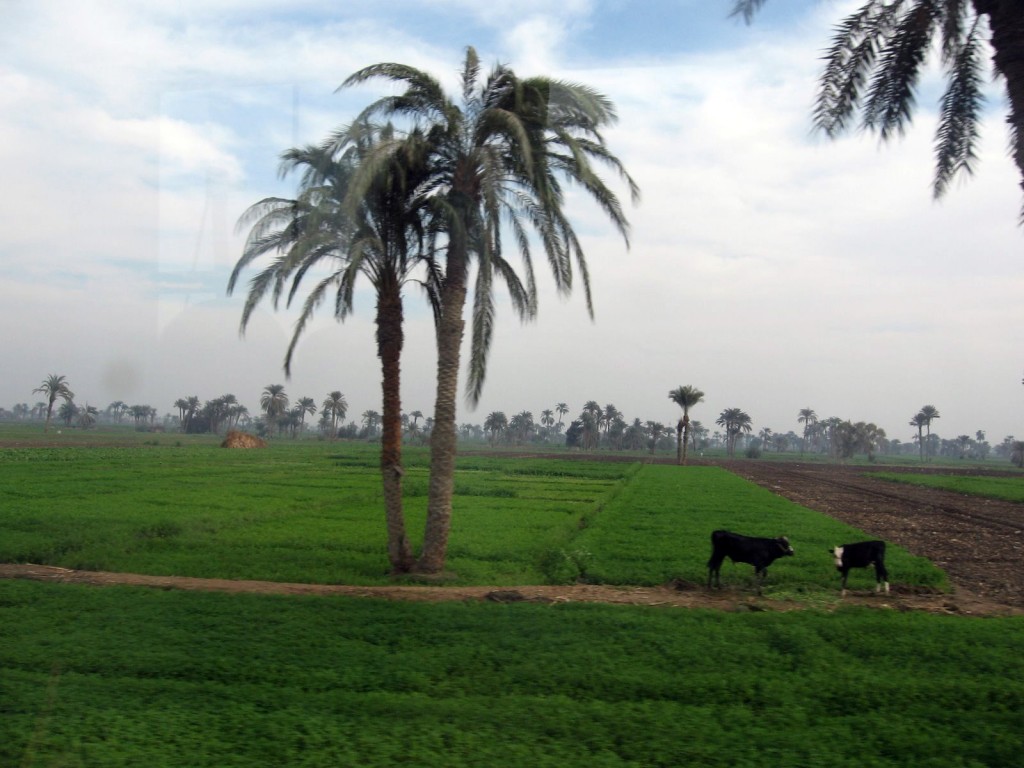One of the most fertile lands on the planet lies between the two branches of the Nile, the Rosetta branch and the Damietta branch. This was where most of Egypt’s food grown, and where the world famous Egyptian cotton thrived.
There used to be seven distributaries for the Nile: (from east to west) the Pelusiac, the Tanitic, the Mendesian, the Phatnitic (or Phatmetic), the Sebennytic, the Bolbitine, and the Canopic (also called the Herakleotic). There are now only two main branches, due to flood control, silting and changing relief: The Damietta (corresponding to the Phatnitic) to the east and the Rosetta (corresponding to the Bolbitine) on the western part of the delta.
This part of the guide deals with the western part of the Delta. Unless you are a regular Indiana Jones or Mowled enthusiast there’s really not much to see or do in Western Delta more than a jaunt to Rashid from Alexandria and some bird watching at Lake Burullus.
Al-Buhayra (The Lake)
135 km to the north of Cairo lies Al-Buhayra, one of Egypt’s coastal governorates. It is in the north of the country and its capital is Damanhur. It has a population of 4,737,129 as of the last 2006 census, and it is one of the largest governorates in Egypt.
The most notable cities and towns in Al-Buhayra are Damanhur (from ancient Egyptian Tmn-Hor – City of Horus), Rashid (Rosetta), Kafr Al-Dawwar, and a hamlet called Al Rahmaneya. Each of them has some claim to fame; Damanhur used to be the ancient capital of Lower Egypt’s 7th Nome, though more recently it is the infamous burial site of the Jewish Yaakov Abuhatzeira. It is also the birthplace of Ahmed H. Zewail, who won the Nobel Prize for Chemistry in 1999.
While Kafr el-Dawwar is an important city in Beheira known for cotton and clothing manufacturing, Al-Rahmaneya was the site of the first major battle between the Mamluk Army under Murad Bey and the French invasion forces led by Napoleon Bonaparte. The Mamluks lost badly and had to retreat all the way to Cairo, where they lost again by the Pyramids. It is also where the famous Muslim scholar Ibn Al-Nafis is supposedly buried; he was the first to discover the pulmonary and coronary circulations.
Rashid, or Rosetta as it is known in the West, is a port city on the Mediterranean coast of Egypt. With the decline of Alexandria following the Ottoman conquest of Egypt in 1517, Rashid boomed, only to wane in importance after Alexandria’s revival. During the 19th century it was a popular British tourist destination, known for its charming Ottoman mansions, citrus groves and cleanliness.
Rashid is famous as the site where the “Pierre de Rosette” (Rosetta Stone) was found by French soldiers in 1799. It also witnessed the defeat of the 1807 British Fraser campaign, on September 19. The British were trying to occupy Egypt after the French army had left the country.
Al-Buhayra is also home to Wadi Al-Natrun, it has been an important region since antiquity; the ancient Egyptians mined the area for use in Egyptian burial rites, and in Christianity as it has four ancient self sufficient monasteries that date back to the 4th century.
Kafr ash-Sheikh
To the north of Cairo, on the Mediterranean coast, lays Kafr ash-Sheikh along the western branch of the Nile. It was named after Sheikh Talha Al-Telmissany from Morocco who settled in the Area in 600 A.H. It has a population of 2,618,111 as of the last major census of 2006.
It is home to Lake Burullus; a brackish water lake in the Nile Delta in Egypt. Bordered by the Mediterranean in the north and agricultural land to the south, it is considered to be a site of International importance for birds under the Ramsar Convention.
The governorate is also home to the popular summertime vacation destination of Baltim on Lake Burullus.
Al-Gharbiyah (The Western)
90 km north of Cairo is Al-Gharbiyah, home to the city of Tanta, in turn home to one of the largest Sufi Mowleds in the country, Mowled Al-Badawi. Its population is 4,010,298 (2006). The first Egyptian president Mohammad Naguib was born in Kafr Alziyat, which is located in this governorate.
Tanta is also famous for its roasted chickpeas (garbanzo beans) and the multitude of strange sweets that are exported to almost every mowled there is in the country.
Al-Ghabiyah is mostly very rural, with 85% of its land cultivated; Al-Mahalla Al-Kubra, the 4th largest city in Egypt has the largest public sector Egyptian textile company, employing 27,000 employees.
Again, unless you are interested in textiles, or a diehard archeologist, or a Sufi, there’s really not much to see or do here.
Al-Minufiyah
One of the principal governorates of Egypt, with a population of 3,270,404 (2006); it is primarily an agricultural governorate.
This governorate is especially known for being the birthplace of two Egyptian presidents: Anwar Sadat (1918-1981, born in Mit Abu Al-Kum) and Hosni Mubarak (1928- , born in Kafr El-Meselha).
Perhaps less known for the Denshawai Incident; the incident is summarized as follows:
“The Denshawai Incident is the name given to a dispute which occurred in 1906 between British military officers and locals in Egypt, believed to mark a turning point in the British presence in that country.
The dispute began with three British officers’ pigeon shooting, when they killed by mistake an Egyptian woman. Angered, the villagers attacked the officers, who opened fire causing injuries before running. Two escaped, one dying of heatstroke in the process.
Concerned with growing Egyptian nationalism, British officials chose to show their strength and make an example of the villagers involved. Many were arrested, and four charged with murder (of the officer who died of a heat stroke!).” Source
We will write the full story and its consequences in a later post insha’Allah.

